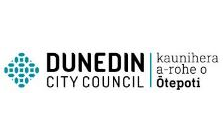St Kilda South
Notes - geography
Census geography
The SSGA18 is New Zealand’s new official statistical geographic area standard. The framework enables statistical entities or units (e.g. dwellings, people or businesses) to be linked to the location where they are placed, live or work.
All the data Stats NZ collects is referenced to a specific place and time. Place can be any geography (e.g. city, lake, township or region), and the point of developing statistical geographical standards is to be able to consistently and accurately identify the size of change as well as where change occurs.
In 2018, the SSGA18 underwent its first major review since 1989. The new boundaries are designed to reflect current land use and spatial patterns. Privacy is still a pivotal requirement for Stats NZ, but the new geographies will also enable more finely grained information at the smaller area level.
The new statistical geographies are:
- meshblock
- statistical area 1 (SA1)
- statistical area 2 (SA2)
- urban rural areas
Meshblocks in NZ
- our smallest geography
- ideally around 30–60 dwellings (around 60–120 residents)
- identified by a seven-digit code
- 53,589 in total
- cover New Zealand and extend out to sea to cover NZ’s 200 nautical mile exclusive economic zone (EEZ)
SA1 geography in NZ (Statistical area 1)
- a new output geography
- ideally around 100–200 residents (maximum 500)
- identified by a seven-digit number starting with 7
- 29,889 SA1s in total
- an aggregation of meshblocks
SA2 geography in NZ (Statistical area 2)
- city SA2s usually have a population of 2,000–4,000 residents
- district council SA2s will usually have a population of 1,000–3,000 residents
- this geography level seeks to show the communities/neighbourhoods that combine socially and economically
- identified by a name (like the old census area units) and a numeric code which has 6 digits (starting with 1 or 2 in the North Island or 3 in the South)
- 2,253 in total
For more information
You can access more detail from Stats NZ Geographic boundary files.
The Dunedin City geography
On this profile Census data is available at a variety of different geographic levels: Regional; Territorial Authority; Ward, and SA2s. The Community Profile provides population data for the Dunedin City and associated suburbs/localities, aggregated from Meshblocks for the Census years: 2018, 2013, and 2006.
Historically meshblocks and Census area Units (CAUs) were used to collect Census data. The 2018 SA2 SA1 level geography framework heralded in many boundary changes. To enable time series comparison Statistics NZ have concorded the older 2013 and 2006 datasets to the most current boundaries.
To be shown individually in this profile, SA2s must have a minimum population of 500 people in every Census year. Occasionally an SA2 population is under 500 – when this occurs the SA2 is amalgamated with a similar neighbouring SA2. This avoids any complications caused by confidentiality rules imposed by Statistics NZ. The SA2 are designed to match official suburb/locality boundaries as close as possible, and represent geographic areas which people can relate to on the ground.
